A Look at the Top Iraq War Helicopters: From Desert Storm to Operation Iraqi Freedom
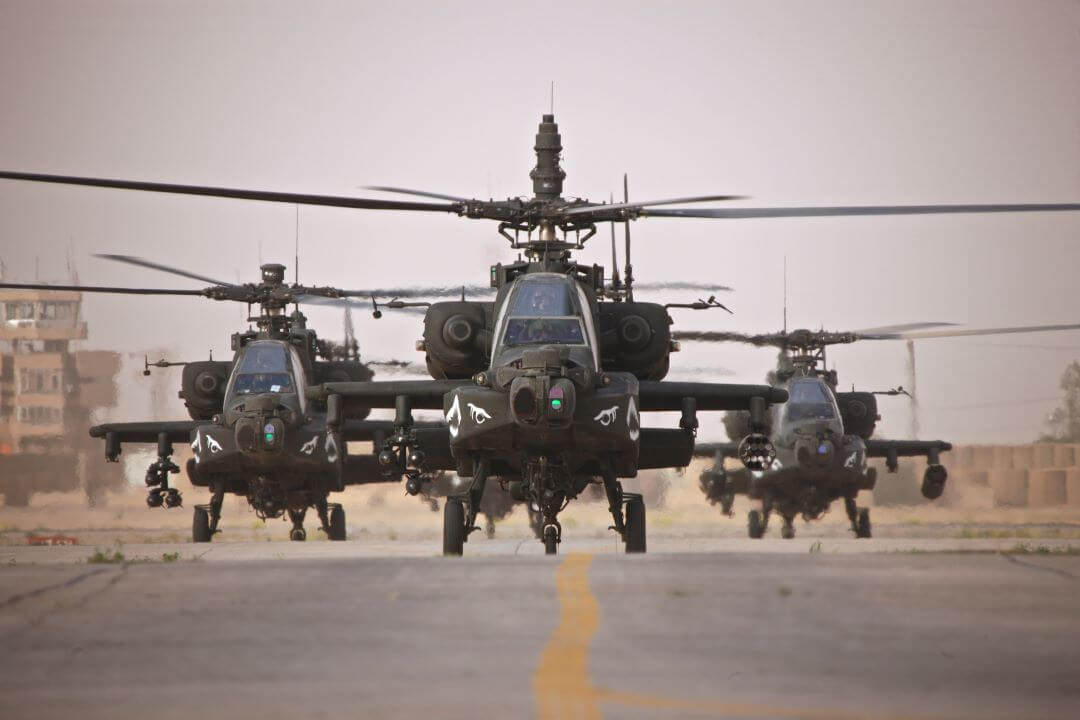
When we think of military operations in the Middle East, the powerful and versatile role of helicopters cannot be overstated. They provided troop transport, air assault, reconnaissance, air support, and so much more.
In this article, we’ll take a closer look at this interesting period in helicopter history and the remarkable array of Iraq War helicopters that played pivotal roles in both major Persian Gulf conflicts of the late 20th and early 21st centuries. But first, let’s take a few moments to familiarize ourselves with these conflicts and the events that led up to them.
A BRIEF OVERVIEW OF THE PERSIAN GULF AND IRAQ WARS
The Persian Gulf War, often referred to as the First Gulf War or Operation Desert Storm, took place from August 2, 1990, to February 28, 1991. It was a conflict triggered by Iraq’s invasion of Kuwait, leading to a 42-nation coalition led by the United States to liberate Kuwait from Iraqi control.
In contrast, the Iraq War, also known as the Second Gulf War or Operation Iraqi Freedom, began on March 20, 2003, with the invasion of Iraq by a coalition of nations. It was similarly led by the United States under the belief that Iraq possessed weapons of mass destruction and finally came to an end over eight years later on December 15, 2011.
WHAT HELICOPTERS WERE USED IN THE PERSIAN GULF AND IRAQ WARS?
These conflicts marked significant chapters in the history of modern warfare, where helicopters played an integral role in both strategic and tactical operations. From Operation Desert Storm to Operation Iraqi Freedom, here are the five most iconic Iraq War helicopters.
1. Sikorsky UH-60 Black Hawk
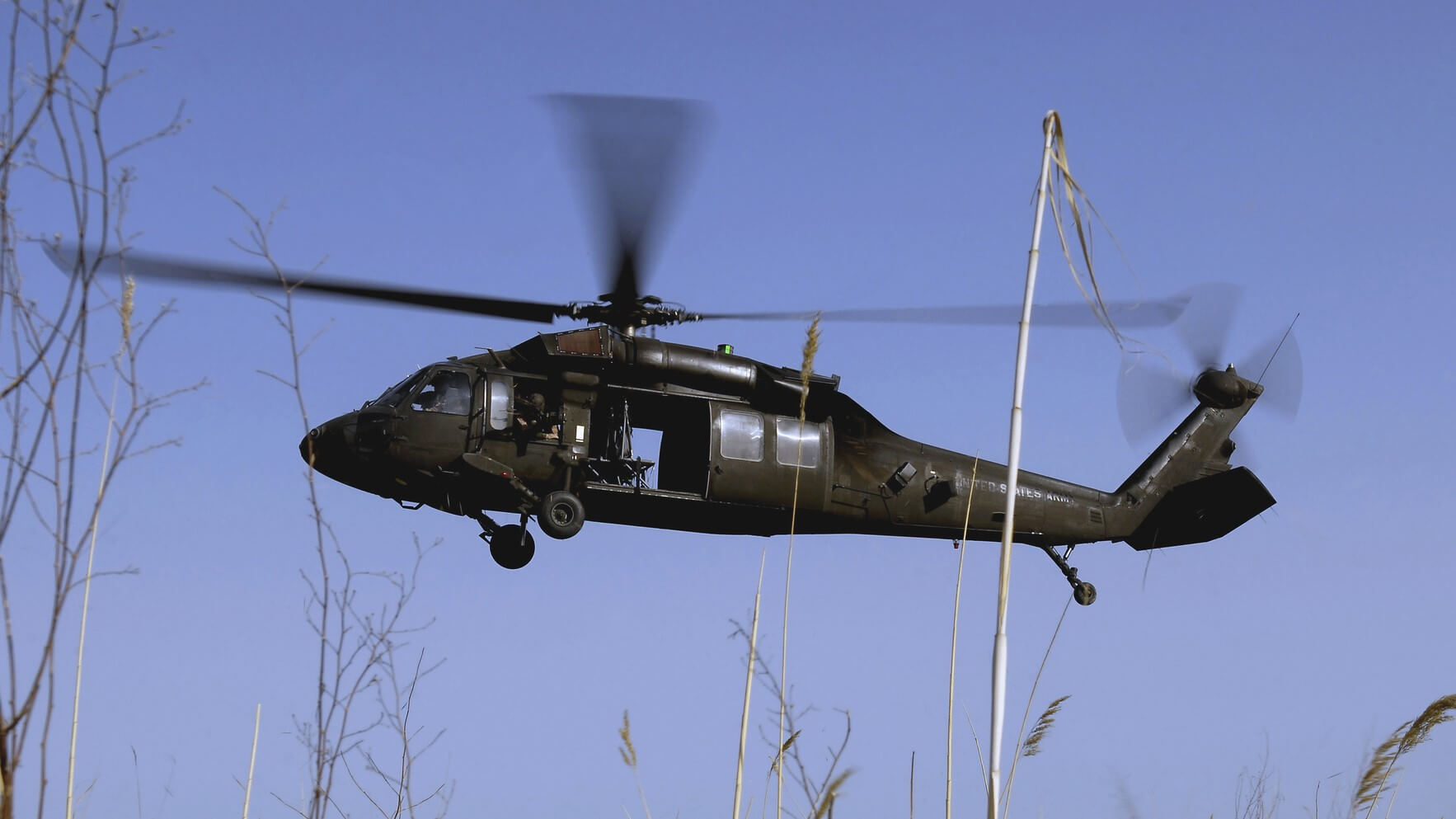
The UH-60 Black Hawk, produced by Sikorsky Helicopters, is a versatile workhorse known for its robustness and adaptability. It has been a vital component of the U.S. military’s helicopter fleet for decades. It became a true household name after the release of Ridley Scott’s 2001 blockbuster film, Black Hawk Down, and its infamous helicopter crash scene.
During the Gulf Wars, Black Hawk helicopters played a critical role in transporting troops and supplies to the front lines. With its spacious cabin, it could accommodate a significant number of troops or cargo, contributing to rapid deployments and logistical support.
2. Boeing AH-64 Apache
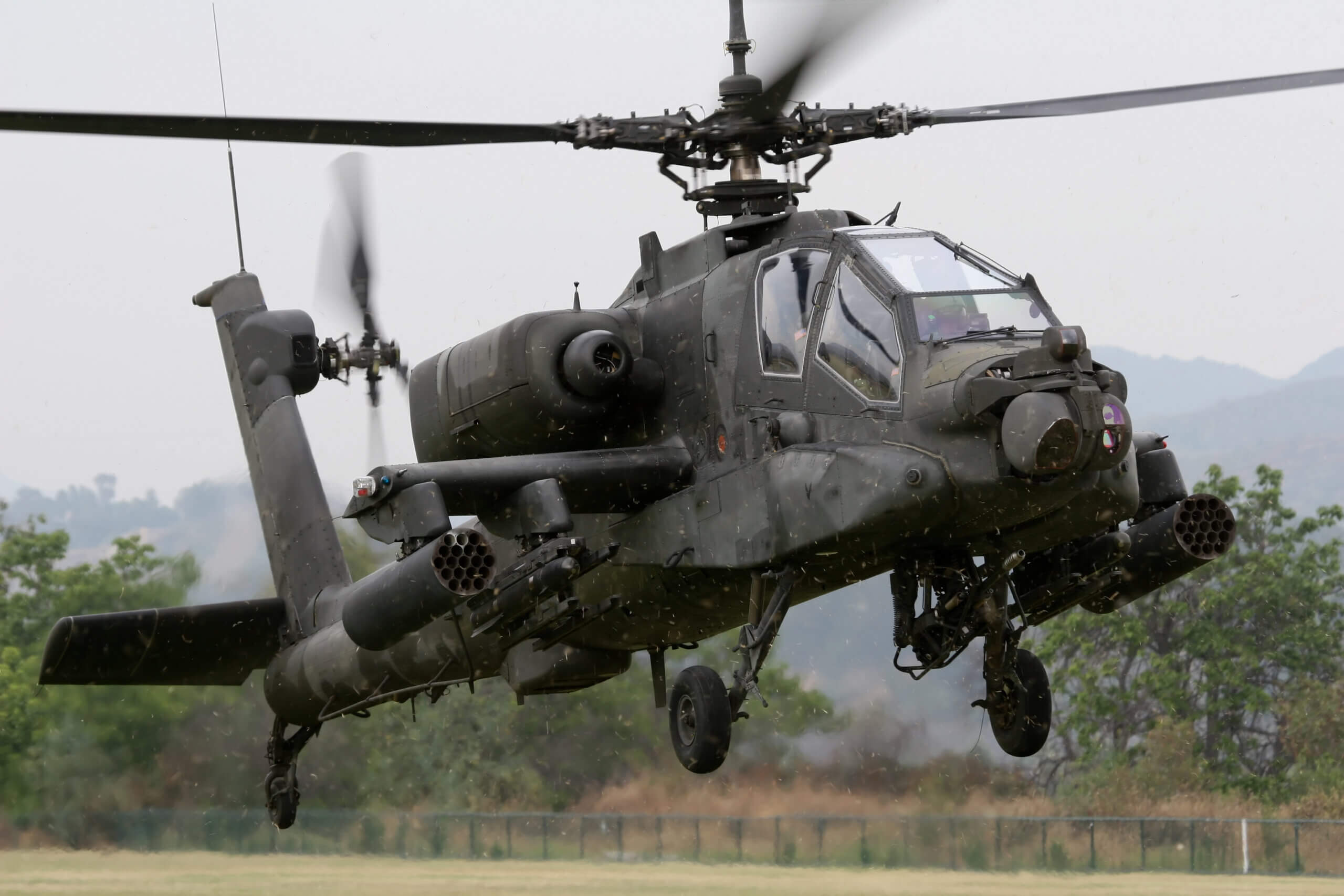
The AH-64 Apache, manufactured by Boeing, is one of the most formidable attack helicopters in the world. Armed with Hellfire anti-tank missiles and a 30mm chain gun, the Apache provided unparalleled firepower during the Gulf Wars.
Its advanced targeting systems enabled precise strikes on enemy armor and positions. The Apache’s role extended beyond attack, however, as its Longbow radar allowed it to perform reconnaissance and acquire targets effectively.
3. Bell AH-1 Cobra
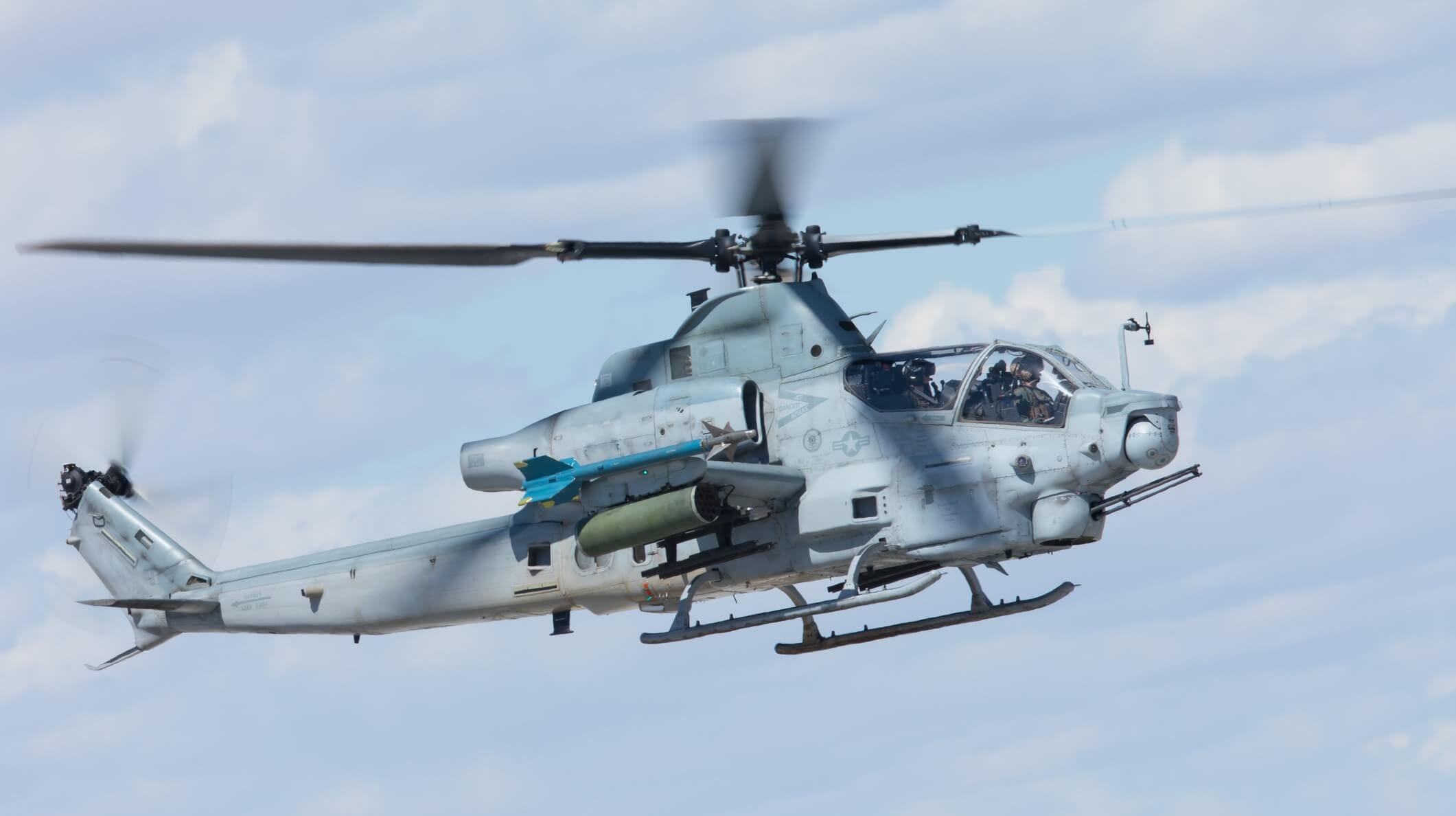
The AH-1 Cobra, designed by Bell Helicopter, is a single-engine attack helicopter with a rich history of combat service. Having served as far back as the Vietnam War, the Cobra was often used in tandem with its far more recognizable cousin, the Huey.
During Operation Desert Storm, it served as a key element of the U.S. Marine Corps’ aviation assets. The Cobra’s agility and anti-armor capabilities were particularly instrumental during ground operations. It provided close air support and reconnaissance, making it an indispensable asset during the extended Iraq War campaign.
4. Mil Mi-17
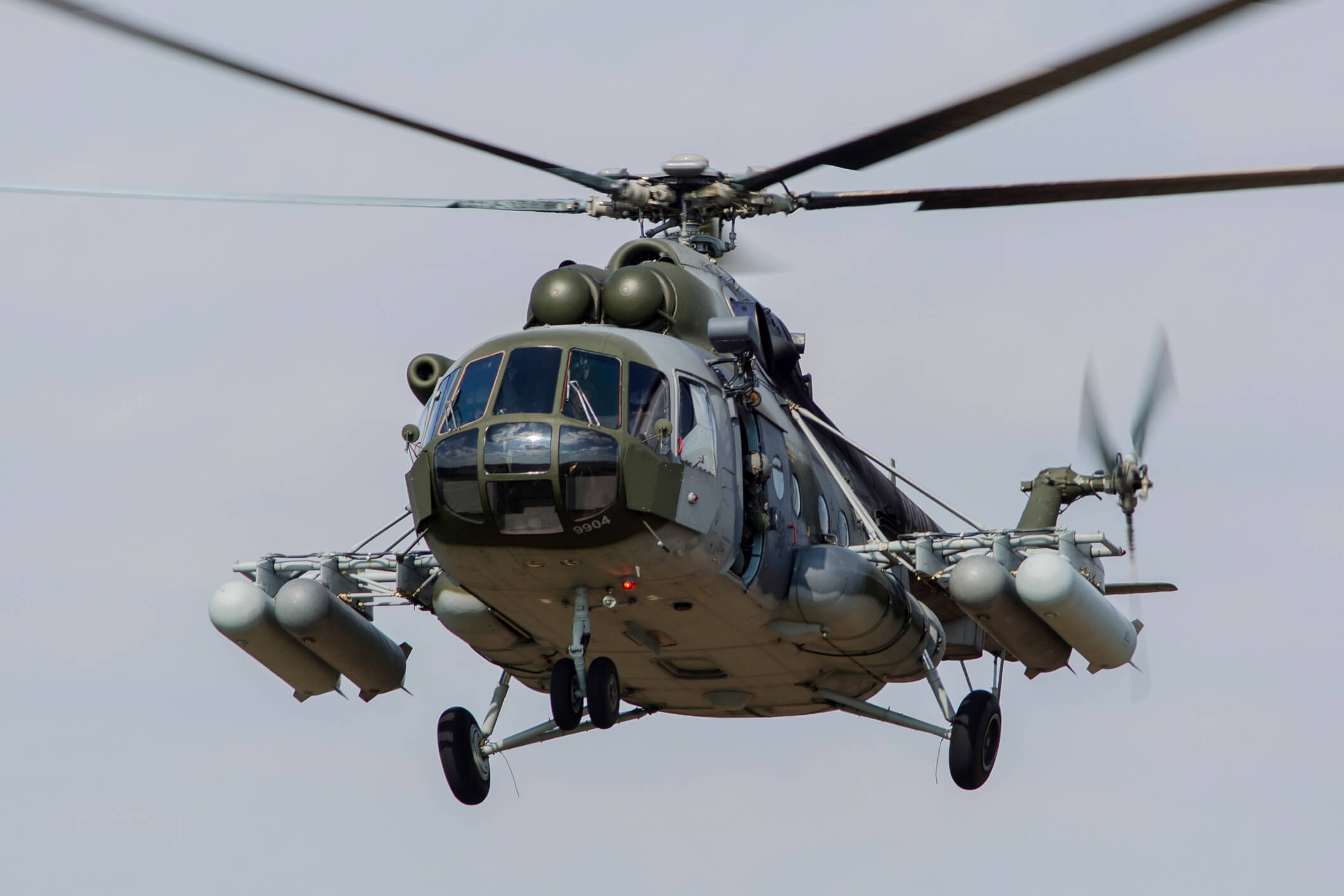
The Mil Mi-17, a product of Russian helicopter engineering, became a prevalent sight in the Iraq War. It is renowned for its ruggedness and reliability, making it well-suited for operating in the harsh desert conditions.
With its considerable payload capacity, the Mi-17 facilitated troop transport, cargo resupply, and medical evacuations. Its ability to withstand the rigors of desert warfare solidified its importance in Iraqi operations.
5. Bell OH-58 Kiowa
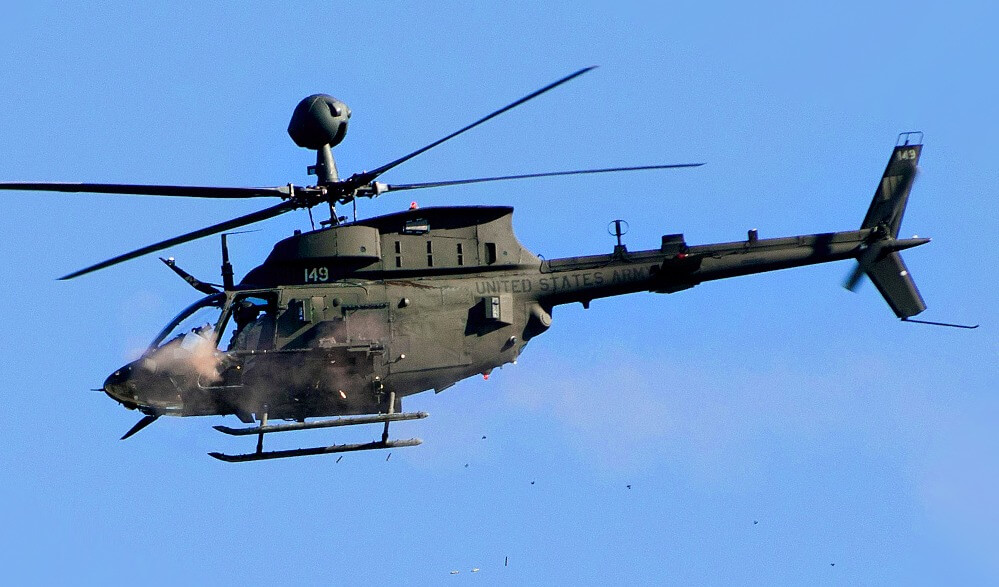
The OH-58 Kiowa, produced by Bell Helicopter, is a family of single-engine helicopters that was first manufactured in 1969. Its sensor systems and agility made it an invaluable asset for tracking enemy movements and providing vital intelligence to ground forces.
The Kiowa played a pivotal role as a scout and reconnaissance helicopter during both Gulf conflicts. Its ability to operate at low altitudes and hover quietly made it a stealthy observer, ensuring that coalition troops had the upper hand in situational awareness.
MORE HELICOPTER HISTORY IS JUST A CLICK AWAY
These helicopters—and many others used during the Persian Gulf and Iraq Wars—played a crucial part in the success of coalition forces. They showcased the importance of air power in modern warfare, exemplified the evolution of military aviation technology, and proved their ability to adapt to an environment as challenging as the Middle East. The lessons learned from their deployment continue to influence modern helicopter design and operational strategies today.
If you found this exploration of Iraq War helicopters intriguing, be sure to check out our other military helicopter history blogs, where we dive into the iconic helicopters of various historical conflicts, from Vietnam to Korea.
You can also shop Chopper Spotter’s lineup of premium helicopter tugs for safer and more secure transportation of your aircraft. Our range of products is designed to help meet the needs of any application, from private owners with a single, lighter helicopter to organizations with a heavy-duty fleet. Request a quote today to start experiencing the ease and maneuverability of the industry’s best ground-handling equipment.